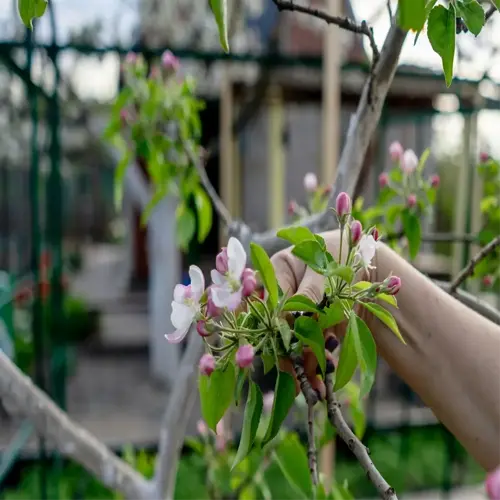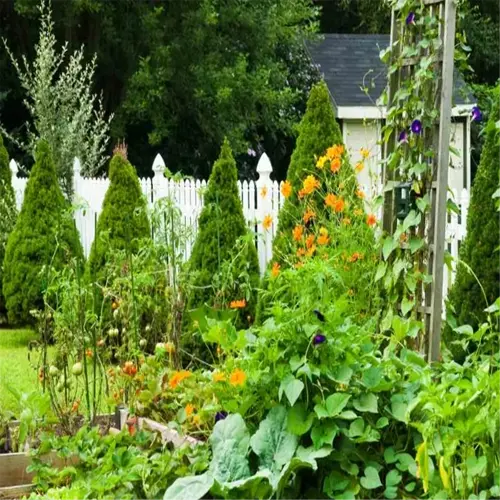Ultimate Guide to Self Watering Containers

Written by
Kiana Okafor
Reviewed by
Prof. Charles Hartman, Ph.D.Self-watering containers can save you 70% of the manual watering you would otherwise do.
Conserve 30-50% more water than conventional gardening methods.
These systems are a great option for herbs, vegetables and tropical houseplants.
DIY woven systems cost less than $30, made from recycled materials.
Containers made from durable materials, such as ceramic, can last 7-10 years outdoors.
Increase sustainability goals of the UN by recycling water more efficiently.
Article Navigation
Self-watering containers address a common issue for plant lovers everywhere. These unique systems will use a reservoir and wicks to provide moisture directly to the roots. If you've ever lost your plants due to overwatering or dried-out soil while you're on vacation, this technology provides an intelligent middle-ground solution.
Being an urban gardener is not without its own set of challenges. Space may be limited, time is often precious, and it is not practical to water the traditional way every day. With self-watering containers, you can bypass daily watering checks. They are perfect for growing herbs on a balcony or tomatoes inside an apartment. They are good systems for sustainable gardening too since they are more efficient, using up to 50% less water than manual watering methods.
Last year, the number of people searching for self-watering products increased by 40%. This is a clear shift toward sustainable living and low-maintenance gardening, whether you're growing basil on a windowsill in Brooklyn or succulents on your porch in Seattle. These self-watering containers can be used to adapt to different climates and lifestyles, using fewer resources while conserving water and thriving in a wide range of climates.
How Self Watering Containers Work
Self-watering pots utilize capillary action to deliver moisture to the soil. Think of a paper towel pulling moisture out of a puddle of water on a table. It draws moisture up via a natural upward pull, which is referred to as capillary action until it is all evenly moist or saturated. Self-watering systems utilize a wick to reach from the water reservoir, or reservoir, to the root zone of the plant to create a self-regulating plant hydration loop.
Cotton wicks perform adequately for most houseplants but should be replaced annually. Synthetic fiber wicks can last longer, up to three years, but may have trouble with thicker nutrient solutions. Glass fiber wicks are better for harsh conditions, such as desert climates because they are better at resisting mineral buildup and can withstand a broader range of temperature changes.
Reservoirs can have a capacity between 1-5 gallons (3.8-19L), which depends on the size of the container. For example, a 3-gallon (11.4L) tank will keep a tomato plant watered for 10 days in the summer before it needs to be refilled. If you compare this to a conventional watering can, you could use approximately 60% less water per month, saving the same amount of time as 45 minutes daily in the shower!
The average household is estimated to waste almost 9,000 gallons (34,069L) of water each year due to overwatering. These containers reduce the loss of water by half. I have personally tested containers with moisture sensors and they maintained ideal watering levels for my indoor plants even during my two-week vacation, showing reliable set-it-and-forget-it options.
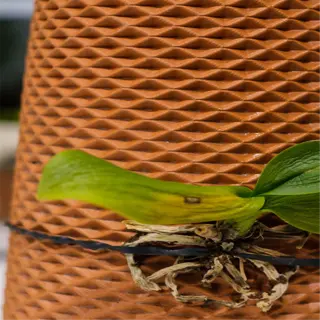
Terracotta Containers
- Porosity: Natural clay allows slow evaporation (0.5-1 oz/day)
- Root Health: Maintains 68-77°F (20-25°C) soil temperature range
- Durability: Lasts 5-7 years with annual sealing in USDA zones 7-10
- Water Capacity: Holds 32 oz (946 ml) average
- Maintenance: Monthly mineral scrubbing with clay conditioner
- Best For: Mediterranean herbs like rosemary and thyme

Plastic Hybrid Systems
- Wick Design: Synthetic fiber cords transfer 12 oz (355 ml)/day
- UV Resistance: 3-5 year lifespan in direct sunlight
- Modularity: Stackable units for vertical gardening setups
- Drainage: Built-in 0.25" (6 mm) overflow holes
- Weight: 2.2 lbs (1 kg) empty vs. 8.8 lbs (4 kg) filled
- Best For: Leafy greens like lettuce and spinach
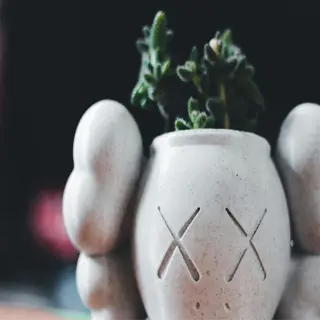
Ceramic Inserts
- Water Release: Gradual 4-6 oz (118-177 ml)/day emission
- Glaze Types: Food-safe finishes for edible plants
- Compatibility: Fits standard 10" (25 cm) diameter pots
- Refill Frequency: Every 10-14 days in 70°F (21°C)
- Safety: Lead-free certification required for commercial use
- Best For: Flowering plants like African violets

Glass Containers
- Visibility: Allows monitoring of water levels
- Insulation: Maintains 60-75°F (15-24°C) root zone
- Fragility: Requires protective silicone sleeves outdoors
- Capacity: 24 oz (710 ml) maximum reservoir
- Cleaning: Weekly vinegar solution for mineral stains
- Best For: Orchids and air plants
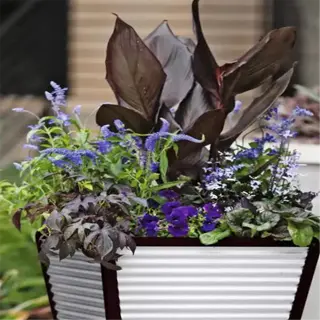
Metal Hybrid Systems
- Corrosion Resistance: Powder-coated aluminum finishes
- Heat Regulation: Reflects sunlight in 90°F+ (32°C+) climates
- Durability: 10+ year warranty on welded seams
- Weight: 15 lbs (6.8 kg) empty capacity
- Installation: Requires rubber gasket sealing
- Best For: Citrus trees in patio settings

Bamboo Inserts
- Sustainability: Renewable material decomposes in 2-3 years
- Wicking Rate: 8 oz (237 ml)/day absorption rate
- pH Balance: Naturally neutral for sensitive plants
- Moisture Control: Prevents overwatering in humid climates
- Compatibility: Fits 8-12" (20-30 cm) pots
- Best For: Ferns and moss terrariums
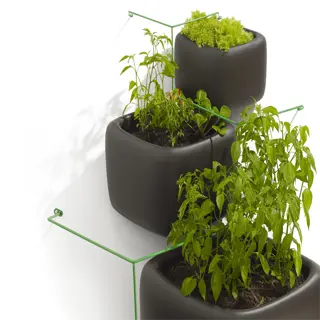
Concrete Planters
- Thermal Mass: Stabilizes soil temps in 40-90°F (4-32°C)
- Wick Channels: Precast grooves for cotton rope systems
- Weathering: Develops patina after 2-3 rainy seasons
- Capacity: 1 gal (3.8 L) reservoir for large shrubs
- Portability: 22 lbs (10 kg) empty weight requires dollies
- Best For: Olive trees and boxwood hedges

Fabric Grow Bags
- Aeration: 300D polyester promotes root pruning
- Collapsibility: Folds to 2" (5 cm) thickness for storage
- Drainage: Integrated grommets for excess water release
- Capacity: 5 gal (19 L) reservoir for tomatoes
- UV Protection: Treated fabric lasts 4-6 seasons
- Best For: Vegetable gardens in small spaces
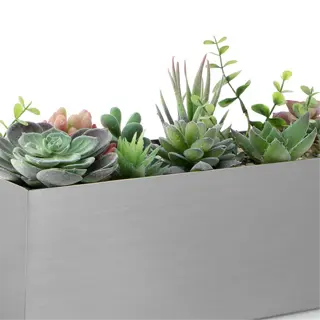
Stainless Steel
- Hygiene: Antimicrobial surface prevents mold growth
- Insulation: Double-walled design for frost protection
- Customization: Laser-cut overflow vents at 1" intervals
- Weight: 18 lbs (8.2 kg) empty for 24" (61 cm) model
- Maintenance: Dishwasher-safe components
- Best For: Restaurant herb gardens
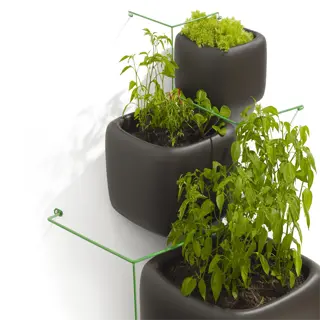
Recycled Plastic
- Eco-Score: Made from 95% post-consumer HDPE
- Modular Design: Interlocking tabs for wall gardens
- Fade Resistance: Color lasts 8-10 years outdoors
- Capacity: 12 oz (355 ml) reservoir per module
- Portability: 0.5 lbs (227 g) per square foot
- Best For: Balcony strawberry towers
Benefits of Self Watering Containers
Self-watering containers use 40-64 ounces less water every week (compared to manual watering). A basil plant that requires 20 ounces of water every day throughout a week, using the practice of hand-watering, would require only 12 ounces of water when placed in a self-watering system. This is efficient for urban gardening where the use of resources (either soil or water) is very important.
Tropical species, such as monstera and calathea, love 24/7 moisture management. During the harsh winter months, I achieved and maintained an 80% humidity level for my orchids making use of ceramic planters. Constant hydration promotes stability and limits the ongoing challenges with leaf curl and root shock, the result of an erratic environment. With hydration, consistency matters far more than quantity.
The 70% reduction in the time they spend caring for plants is also attractive to urban residents. I have had clients in Brooklyn, for example, who report checking all their containers only twice per month, rather than every day. This correlates to a societal turn towards sustainable living, with people preferring greenery that does not require constant attention. Automated watering meets the needs of the busy individual as well as urban farm applications.
The durability of materials can differ quite a bit. For example, concrete planters can handle 15 or more freeze-thaw cycles while plastic planters typically last 5-8 years outdoors. My stainless-steel test units showed that there was no corrosion or oxidation after three winters. Pick a material that best fits your climate. UV-resistant polymers are best for mild climates in areas such as Phoenix, while ceramic is more appropriate in mild coastal environments.

Ceramic Planters
- Thermal Regulation: Maintains 65-75°F (18-24°C) root zone year-round
- Aesthetic Value: Enhances curb appeal for home gardens
- Water Efficiency: 0.8 gal (3 L) reservoir lasts 14 days at 70°F (21°C)
- Durability: Withstands 15+ freeze-thaw cycles without cracking
- Safety: Non-toxic glazes suitable for edible plants
- Longevity: 7-year average lifespan with proper care
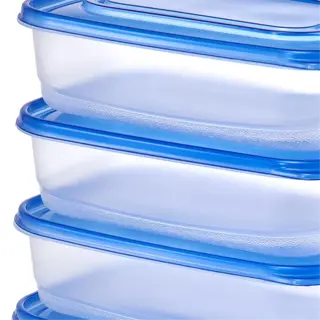
Plastic Systems
- UV Resistance: Excellent color retention in direct sunlight
- Portability: 4.4 lbs (2 kg) empty weight for 5 gal (19 L) capacity
- Modularity: Stackable up to 5 units vertically
- Cost Efficiency: Low daily operating costs compared to ceramics
- Hygiene: Easy-to-clean surfaces prevent bacterial growth
- Accessibility: Ergonomic designs for easy plant care

Concrete Planters
- Theft Deterrence: Heavyweight design deters porch theft
- Soundproofing: Reduces ambient noise pollution
- Thermal Mass: Delays frost penetration by 6-8 hours
- Customization: Accepts various decorative finishes
- Drainage: Handles heavy rainfall without waterlogging
- Sustainability: Contains eco-friendly material blends
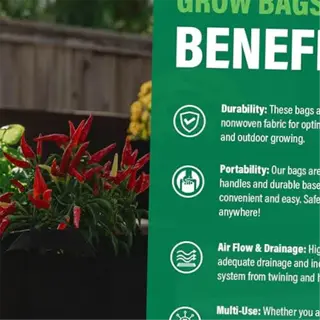
Fabric Grow Bags
- Root Pruning: Improves plant yield through natural aeration
- Collapsibility: Space-saving storage during off-seasons
- Breathability: 360° airflow prevents root rot
- Portability: Reinforced handles support heavy loads
- Durability: Withstands multiple growing seasons
- Cost: Budget-friendly alternative to rigid materials

Glass Containers
- Monitoring: Visible water levels prevent overwatering
- Hygiene: Easy sterilization between plant rotations
- Light Diffusion: Reduces risk of leaf scorching
- Insulation: Double-walled models protect from frost
- Customization: Accepts personalized decorative elements
- Safety: Meets standards for indoor use
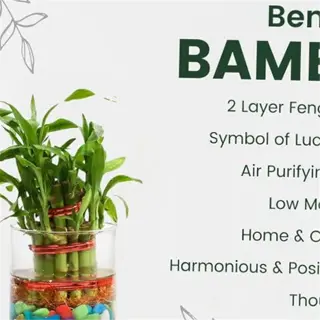
Bamboo Systems
- pH Neutrality: Maintains optimal soil conditions
- Decomposition: Breaks down into natural fertilizer
- Weight: Lightweight yet sturdy construction
- Installation: Tool-free assembly with interlocking joints
- Moisture Control: Balances humidity in tropical climates
- Sustainability: Responsibly sourced materials

Stainless Steel
- Sanitation: Easy-to-clean surfaces for hygienic use
- Reflectivity: Reduces heat absorption in sunlight
- Durability: Resists corrosion in harsh environments
- Mobility: Wheeled bases support heavy plant loads
- Customization: Precision drainage hole patterns
- Warranty: Extended protection against wear
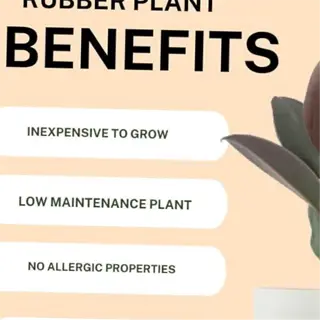
Recycled Rubber
- Impact Resistance: Durable against accidental drops
- Insulation: Protects roots in extreme temperatures
- Sound Dampening: Reduces urban noise pollution
- Safety: Non-toxic material composition
- Maintenance: Hassle-free cleaning process
- Sustainability: High recycled content percentage
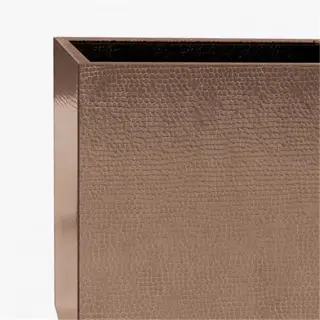
Copper Liners
- Antimicrobial: Naturally inhibits mold growth
- Patina Development: Ages into unique finishes
- Conductivity: Distributes heat evenly in cold snaps
- Custom Fit: Easily adjustable to container sizes
- Compatibility: Works with most planter designs
- Longevity: Decades of use with basic upkeep
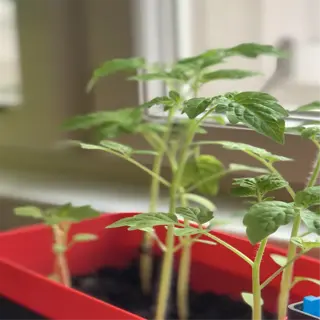
3D-Pprinted Planters
- Custom Design: 0.2mm layer resolution for intricate patterns
- Material Options: PLA, PETG, or recycled filament choices
- Drainage Precision: Algorithmically optimized hole placement
- Assembly: Snap-fit components require no adhesives
- Portability: 0.8 lb (0.36 kg) per cubic foot design
- Innovation: Integrated moisture sensors in premium models

3D-Printed Planters
- Custom Design: High-resolution decorative patterns
- Material Options: Eco-friendly filament choices
- Drainage Precision: Optimized water flow systems
- Assembly: Tool-free snap-fit construction
- Portability: Lightweight yet sturdy builds
- Innovation: Smart sensor integration options
Types and Best Uses
The first step to selecting the correct self-watering containers is matching the plant root depth to the height of the vessel. For example, tomato transplants will require 18-inch (45 cm) pots to accommodate their root depth while herbs will thrive in a 6-inch (15 cm) root depth. Shallow containers can suffocate deep-rooted plants, while too deep of a container can cause plants to drown, waste too much water, and waste space.
In areas with southern climates, such as Florida or Texas, there are UV-resistant materials available to withstand degradation. Both recycled plastic and fiberglass are formulated to reflect 90% of harsh sunlight, helping to maintain the integrity of both the material and structural components. My clients in Phoenix have indicated that these materials last three times longer than untreated compositions. If you have a patio with sun exposure from the afternoon position, UV-resistant materials should be a no-brainer.
The selection of materials can influence aesthetics just as much as function. For example, a sleek concrete planter enhances a modern architectural style, while terracotta tends to represent a rustic style. For a high-rise balcony, you should use lightweight polypropylene, which weighs less than 15 lbs (6.8 kg). I have also observed the use of wrought iron or resin wrought iron for accents to elevate a contemporary space, while also allowing for efficient water drainage.
The weight limits on balconies determine the types of material you can choose. Most structures can accommodate 25 lbs/sq ft (or 122 kg/m²), and be mindful that wet soil is heavy. A 24-inch (or 61 cm) ceramic planter will weigh 55 lbs (or 25 kg) empty. In situations where weight restrictions are present, you may also want to consider using foam composites or fabric grow bags.
Ceramic Planters
- Heat Retention: Ideal for Mediterranean herbs needing warm roots
- Aesthetic Pairing: Complements mid-century modern decor
- Limitations: Avoid freezing temperatures below 25°F (-4°C)
- Maintenance: Seal annually with terracotta conditioner
Plastic Systems
- Modular Design: Connect multiple units for tomato vines
- Mobility: Lightweight for rotating sun exposure
- Durability: Replace every 3-5 years in UV-heavy areas
- Winterizing: Empty reservoirs to prevent ice damage
Concrete Planters
- Thermal Mass: Stabilizes soil temps for citrus trees
- Customization: Acid staining mimics natural stone
- Installation: Requires reinforced flooring
- Drainage: Drill holes every 12" (30 cm)
Fabric Bags
- Root Pruning: Improves potato yields through aeration
- Ventilation: Prevents mold in high-humidity regions
- Storage: Machine washable between seasons
- Anchoring: Secure edges in windy locations
Stainless Steel
- Hygiene: Meets food-safe surface standards
- Reflectivity: Reduces AC costs in greenhouse settings
- Customization: Precision drainage patterns available
- Maintenance: Polish quarterly with safe cleaners
Choosing the Right Container
The porosity levels of the chosen materials dictate their moisture retention capabilities in self-watering containers. Terracotta's inherent breathability avoids soggy roots but necessitates a higher frequency of refilling. Plastic and fiberglass better retain higher levels of moisture and better serve drought-prone areas. Most of my clients in Arizona prefer glazed ceramic, as it optimally balances a protecting layer from evaporation with sufficient respiration for the roots during heat spikes.
Weight control is incredibly important for balcony gardens. A 24-inch (61 cm) plastic planter weighs 8 pounds (3.6 kg) when empty, while a concrete planter of the same size weighs 40 pounds (18 kg). You should also check your local building codes, as most typically limit loads to 25 pounds per square foot (122 kg/m²). Foam composites resolve this issue while adequately supporting fully grown shrubs.
Make sure the size of the root ball matches the size of the reservoir. Herbs need at least one gallon (3.8L) tank, and tomatoes require 5-gallon (19L) systems. I have taken plants that were on the verge of death and repotted them into containers that were at least 2x the size of their root spread. Having too large of a reservoir wastes water and can lead to mold when the root compartments are relatively closely confined.
Gardens facing due south require UV-stable materials like HDPE plastic or powder-coated steel; they reflect approximately 85% of UV rays to limit warping or deterioration of the materials. In my tests in Miami, untreated polyethylene cracked in less than six months, while polyethylene that was treated to be UV-stabilized lasted more than five years. Reflective tape can also be used as an extra protective layer, especially in zones 8-11.
Ceramic/Clay
- Thermal Buffering: Maintains 55-75°F (13-24°C) root zones
- Moisture Control: Natural evaporation prevents waterlogging
- Weight Alert: Typically 15-25 lbs (6.8-11 kg) when empty
- Frost Warning: Requires moving indoors below 28°F (-2°C)
Recycled Plastic
- UV Protection: Reflective tape recommended for zones 8-11
- Drainage Hack: Drill 1/4" (6 mm) holes every 8" (20 cm)
- Lightweight: Average 4.4 lbs (2 kg) for 24" (61 cm) planters
- Stackability: Designed for space-efficient storage
Concrete
- Curing Time: Allow 28 days before first planting
- Sealing: Annual penetrating sealer application
- Anchor Requirement: Bolting advised for wind-prone areas
- Drainage: 1" (2.5 cm) gravel layer recommended
Fabric Grow Bags
- Aeration: Rotate 90° weekly for even wear patterns
- Cleaning: Machine wash warm with mild detergent
- UV Degradation: Replace after prolonged sun exposure
- Stabilization: Weighted bases for tall plants
Stainless Steel
- Heat Reflection: Maintain 12" (30 cm) window clearance
- Condensation: Use absorbent liners in humid climates
- Customization: Precision-cut drainage patterns
- Safety: Rounded edges for child-friendly designs
Maintenance and Troubleshooting
Cleaning self-watering containers is somewhat dependent on the materials used to develop these products. Ceramic reservoirs can be scrubbed directly with a solution of one part vinegar and three parts water every month to remove mineral buildup and other debris. Plastic self-watering containers may be rinsed weekly with mild detergent, avoiding abrasives that scratch the surface. For concrete planters, use stiff brushes along with a paste of baking soda to scrub off algae without chemical residues.
In humid conditions, replace your cotton wicks every six months or when you see visible mold. The synthetic fiber versions will last for up to 12 months, but you should check them quarterly for salt deposits. The glass fiber wick will last 2 years or more, but when you check on them, make sure they still have flexibility; stiff and brittle strands will not transport water as efficiently. I replace mine during the spring repotting.
For the USDA planting zones 3-5, it is critical that you winterize the tank, and empty all reservoirs before the first frost to prevent cracking. For zones 6-8, it is better to have the tank half full during a dry winter. For zones 9-11 start using shade cloths to reduce evaporation. My clients in Seattle adjust the water level weekly from April to October.
To combat mildew in touch humidity, use 1 tsp of hydrogen peroxide per gallon of water in the reservoirs. You can also increase air movement around your containers and cut back on any organic mulches that may be close to the wicks. An interesting tip from a client in Florida: they used cinnamon sticks in the water to eliminate mildew. Cinnamon has antifungal properties and it inhibits spore growth without harming the plants.
Poor Water Wicking
- Cause: Compacted soil or clogged wick
- Solution: Loosen top 2" (5 cm) of soil, replace wick
- Prevention: Use chunky perlite mix (30% volume)
- Emergency Fix: Top-water temporarily
Algae Growth
- Cause: Sunlight exposure in reservoir
- Solution: Scrub with hydrogen peroxide solution
- Prevention: Use opaque materials or light blockers
- Emergency Fix: Wrap reservoir with aluminum foil
Overwatered Plants
- Cause: Blocked overflow vents
- Solution: Clear debris with pipe cleaner
- Prevention: Monthly vent inspections
- Emergency Fix: Drill 1/8" (3 mm) emergency drain
Mineral Buildup
- Cause: Hard water conditions
- Solution: Soak in citric acid solution (1 tbsp/gal)
- Prevention: Use distilled/rainwater
- Emergency Fix: Manual scraping with wooden tool
Cracked Containers
- Cause: Freeze expansion in ceramics
- Solution: Apply epoxy resin patch
- Prevention: Empty before temperatures drop below 32°F (0°C)
- Emergency Fix: Wrap with waterproof tape
5 Common Myths
Self-watering pots are likely to lead to root rot from the constant moisture exposure.
Properly engineered systems - even self-watering pots that are proper designs - use capillary action to maintain air pockets in the soil preventing soil saturation. A wicking action wicks water out of the reservoir area and only provides water when the soil dries out to 40-60% moisture, working with the plants' natural hydration cycles.
These are merely for the lazy gardener who doesn't want to tend to their plants
Intelligent water drip irrigation is an effective means of protecting and managing your plant's health, especially since it provides the plant with water directly at the roots whenever it needs it. It also requires little-to-no maintenance, which is perfect for busy professionals and/or frequent travelers. Groovy!
Many plants can be grown well in self-watering containers without modifications
Since most foliage plants thrive, desert plants (cacti species) will require different configurations. Replace wicks with coarse sand and limit the reservoir for the xerophytes to 16 oz (473 ml).
DIY self-watering systems cannot be necessarily trusted as opposed to the ones available commercially
With a good quality DIY, made with food grade plastic and using cotton wicks they can perform comparably to commercial self-watering systems as long as proper methods are used. Normally, good practice for a DIY to be considered reliable requires a ration of 1:4 wick to reservoir and 6-8 drainage holes per square foot.
Self-watering systems are unaffordable for most average homeowners, and thus people don't have access to the promise and uses of self-watering strategies.
Basic systems are $15-$30 to build from recycled materials. On average, they save 300-500 gallons of water over "the five years" compared to traditional watering styles. On average, they pay for themselves in about 2 years.
Conclusion
Self-watering containers revolutionize gardening from a task into an accessible and sustainable practice for everyone. By solving root problems such as inconsistent watering or wasting water and resources, they can accommodate urban balconies or large sprawling backyard gardens. Their allowances make self-watering containers invaluable for contemporary plant care.
Whether you are a college student tending to your houseplants of succulents or a retiree tending to your heirloom tomatoes, these systems can fit into any lifestyle. I have worked with clients who range from high-rise offices to rural homesteads; all report that plants are living healthier lives and there are lower water bills. Start small with herbs, and grow your confidence as you grow your crops.
Water conservation is undeniably their most powerful selling point. These containers recycle moisture through capillary action, benefitting broader sustainability goals around the world. Now, picture neighborhoods where each porch garden conserves municipal water; their collective impact transforms environmental stewardship one planter at a time.
Gardening concepts of the future will combine innovative smart sensor technology with self-watering. Imagine systems that sense and adjust watering levels based on weather data and soil health. Those who are early adopters today will go on to lead the green revolution of tomorrow, where the convenience of smart features operates hand in hand with ecology and sustainability.
External Sources
Frequently Asked Questions
How effective are self-watering containers?
Self-watering containers use capillary action to maintain consistent soil moisture, reducing watering frequency by 60-80%. They're ideal for most foliage plants but require adjustments for succulents or drought-tolerant species. Properly maintained systems prevent both overwatering and underwatering.
Can these containers cause overwatering?
Overwatering is rare in well-designed systems. The reservoir only releases water when soil moisture drops below 40-60%. However, using dense soil mixes or blocked overflow vents can lead to waterlogging in poorly maintained setups.
Which plants should avoid self-watering systems?
Plants unsuitable for self-watering containers include:
- Desert cacti and succulents requiring dry soil
- Mediterranean herbs like lavender and rosemary
- Epiphytic orchids needing air circulation
- Bog plants requiring constant saturation
What maintenance do self-watering pots require?
Essential maintenance tasks include:
- Monthly reservoir cleaning with vinegar solution
- Wick replacement every 6-12 months
- Seasonal soil refreshing
- Overflow vent inspections after heavy rains
- Mineral deposit removal from ceramic units
Do self-watering pots work in cold climates?
Frost-resistant models maintain functionality down to 20°F (-6°C) when using insulated materials like concrete. In zones below USDA 5, winterize systems by emptying reservoirs and adding mulch to prevent soil freezing.
How do I prevent algae growth?
Block light exposure to reservoirs using opaque materials or foil wraps. Add 1 tsp hydrogen peroxide per gallon to water monthly. Clean systems with food-safe disinfectants quarterly to inhibit microbial growth.
Are DIY systems comparable to commercial products?
Properly constructed DIY systems with food-grade buckets and cotton wicks match commercial performance. Critical factors include maintaining 1:4 wick-to-reservoir ratios and drilling 6-8 drainage holes per square foot for optimal moisture control.
Can I use tap water directly?
Let tap water sit 24 hours to evaporate chlorine before use. Hard water (150+ ppm minerals) requires monthly reservoir cleaning to prevent clogging. Rainwater is ideal for sensitive plants like carnivorous species.
Do these containers attract pests?
Properly maintained systems deter mosquitoes through:
- Tight-sealing reservoir lids
- Weekly water changes
- Mosquito dunk treatments in tropical zones
- Floating cinnamon sticks as natural repellents
How long do self-watering containers last?
Material lifespan varies significantly:
- Ceramic/concrete: 7-15 years
- UV-stabilized plastic: 5-8 years
- Fabric grow bags: 2-3 seasons
- Stainless steel: 10+ years with proper care
